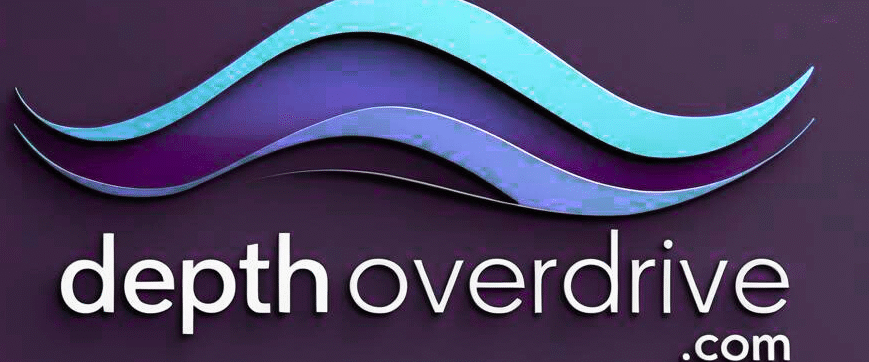Are you struggling to create blog posts that do more than just attract traffic? If your content isn’t turning readers into subscribers or buyers, then you’re missing a key piece of the puzzle. To build real momentum, you need to master the art of conversion optimization. That means writing posts that don’t just inform but inspire action.
Whether your goal is email list growth, product sales, or more comments, the structure and messaging of your blog post matter. By learning what makes content convert readers, you can produce high-converting blog posts that keep working long after they’re published. Let’s explore how to write content that turns readers into customers—step by step.
Understand What Conversion Means in Blogging
In blogging, a conversion isn’t just a sale. It’s any action you want your reader to take. That might be joining your email list, clicking a link, or downloading a free guide. When someone takes that action, it’s called a conversion. But why your blog isn’t converting might come down to poor structure, bad design, or weak calls to action.
To improve this, you must understand measure conversion performance in blogging. It tells you how well your content is working. If 100 people read your post and 10 sign up, your rate is 10%. The goal is to improve the conversion rate on the blog over time by testing different formats and messages.
Identify High-Converting Blog Posts
If you want more results, you need to know how to find high-performing blog posts. Start by checking Google Analytics or similar tools. Look for posts that get traffic and lead to actions like clicks or signups. These are your high-converting blog posts.
You’ll often find that Types of blog content that generate leads include how-to guides, product reviews, listicles, and case studies. Each of these naturally leads to the next steps. Knowing this helps you create more conversion-focused content examples in the future.
Plan a Winning Content Strategy
Before you write, create a content marketing plan. This should include audience research, goals, and topics. A strong plan uses an editorial calendar for bloggers to keep posts consistent and timely. Good planning helps you stay on track.
The best plans mix evergreen blog content with trend-based posts. Evergreen posts keep bringing traffic for years. Trend posts bring quick spikes. Both can help you increase blog conversions when you match content to audience needs.
Must-Have Tools for Planning Your Blog Content
The right tools make planning easy. Use content creation tools like Notion or Trello for ideas. For SEO, tools like Ahrefs or Surfer SEO help you write what people are searching for. To stay organized, apps like CoSchedule or Asana work well.
Here’s a helpful table comparing popular tools to manage blog content:
| Tool | Purpose | Best For |
| Trello | Editorial planning | Beginners |
| Notion | Note-taking and strategy | Content teams |
| Surfer SEO | SEO-optimized writing | Bloggers focused on SEO |
| Grammarly | Grammar and tone checking | All bloggers |
| Google Trends | Trend discovery | Timely topic ideas |
Create Conversion-Focused Blog Posts
To get action, write content that speaks directly to the reader. Use strong CTAs and call-to-action techniques that fit naturally. Add value in every paragraph, and end with a clear next step. This is how you create blog posts that drive action.
Using CTA examples for bloggers, like “Download this free cheat sheet” or “Join our free course now,” can boost clicks. Pair that with Thrive Leads plugin benefits, which make adding opt-ins easy. This tool works well with WordPress plugins for blogging.
Optimize Every Part of Your Blog Post

It’s not just what you say, but how your post is built. To optimize blog posts for sales, use clear headlines, scannable formatting, and responsive design. Also, add visual content for blogs like images, charts, and videos to hold attention.
Don’t forget to optimize blog images. Compress them to speed up load times. Add alt text for SEO. Great visuals support your message and increase blog traffic vs conversions. If people stay longer, they’re more likely to take action.
Content Upgrades: Why They Work
A content upgrade is a bonus offered inside a blog post. It could be a checklist, guide, or free PDF. These content upgrades match the topic and are a great way to offer more help. They’re also great for email list growth.
Using Marketing Cheat Sheets or free toolkits is a proven way to boost subscriber growth. If your upgrade is useful, people will gladly trade their email for it. This method also works well with Thrive Leads plugin benefits.
Proven Promotional Tactics From Successful Bloggers
You can’t just publish and hope. You must promote. Use Effective Blog Promotion Techniques like SEO, Pinterest, and email marketing. Reach out to influencers. Use forums. Repurpose content into videos or posts on other platforms.
Look at Successful bloggers’ content strategies. They republish content, build email funnels, and promote old posts. They also test everything. Watch what they do, not just what they say. That’s how they maintain consistent lead generation tactics.
What You Can Learn From These Experts
Experts like Neil Patel, Elna Cain, and Brian Dean succeed by testing everything. They focus on content that turns readers into customers. They also track results using tools like Google Analytics and Hotjar.
Their biggest lesson? Know your audience. When you understand their pain points, you’ll write better. You’ll also know which blogging tools, like Thrive Leads, work best for your niche. This is how you improve the conversion rate on the blog step-by-step.
Final Thoughts: Build, Optimize, Promote
Blogging success is more than writing. It’s building smart systems that bring readers and convert them. To win, you need to write clearly, plan well, and optimize always.
Take time to test what works. Use the right WordPress plugins for blogging, strong CTAs, and great content. Stay consistent. When you do, your blog will become a machine that brings in traffic, grows leads, and drives action.
FAQs:
1. What is a conversion in blogging?
A conversion in blogging is when a reader takes a desired action, like subscribing to your email list, clicking a link, downloading a guide, or making a purchase.
2. How do I create blog posts that drive conversions?
To create blog posts that drive action, focus on strong headlines, emotional triggers, clear value, and effective call-to-action techniques that guide the reader toward your goal.
3. What are the best tools to manage blog content and increase conversions?
Top tools include Surfer SEO, Grammarly, Thrive Leads, and Trello. These help with planning, writing, and optimizing posts to convert better.
4. Why isn’t my blog converting well?
Common issues include weak CTAs, poor formatting, slow load times, or not understanding your audience. Start by reviewing blogging mistakes that hurt conversions.
5. What types of content generate the most leads?
Types of blog content that generate leads include how-to guides, listicles, case studies, and posts with content upgrades like free downloads or templates.
Welcome to Depthoverdrive,
I’m Syeda Naqvi, a passionate SEO content writer with 3 years of experience in crafting engaging, optimized, and reader-friendly content. I specialize in creating content that not only ranks on search engines but also provides real value to readers, with a strong understanding of keyword research, on-page SEO, and content strategy.

